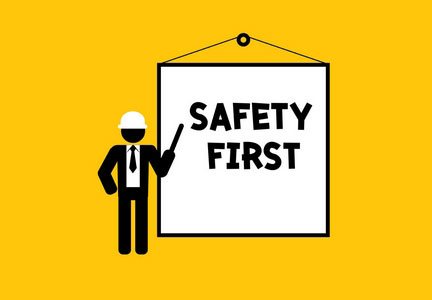Get Your Safety Program Started With These 10 Steps
If you are not quite ready to implement a complete safety and health program, here are some simple steps you can take to get started. Completing these steps will give you a solid base from which to take on some of the more structured actions you may want to include in your program.
Our partnership with WalletCard provides our customers free access to their Health and Safety Tracking System. Contact NIS Training to get free access to WalletCard CORE.
1. Establish safety and health as a core value.
Tell your employees that making sure they finish the day and go home safely is the way you do business. Assure them that you will work with them to find and fix any hazards that could injure them or make them sick.
2. Lead by example.
Practice safe behaviors yourself and make safety part of your daily conversations with employees.
3. Implement a reporting system.
Develop and communicate a simple procedure for employees to report any injuries, illnesses, incidents (including near misses/close calls), hazards, or safety and health concerns without fear of retaliation. Include an option for reporting hazards or concerns anonymously.
4. Provide training.
Train employees on how to identify and control hazards in the workplace, as well as report injuries, illnesses and near misses.
5. Conduct inspections.
Inspect the workplace with employees and ask them to identify any activity, piece of equipment or materials that concern them. Use checklists to help identify problems.
6. Collect hazard control ideas.
Ask employees for ideas on improvements and follow up on their suggestions. Provide them with time during work hours, if necessary, to research solutions.
7. Implement hazard controls.
Assign employees the task of choosing, implementing and evaluating the solutions they come up with.
8. Address emergencies.
Identify foreseeable emergency scenarios and develop instructions on what to do in each case. Meet to discuss these procedures and post them in a visible location in the workplace.
9. Seek input on workplace changes.
Before making significant changes to the workplace, work organization, equipment or materials, consult with your employees or crews to identify potential safety or health issues.
10. Make improvements to the program.
Set aside a regular time to discuss safety and health issues, with the goal of identifying ways to improve the program.
Source: OSHA

